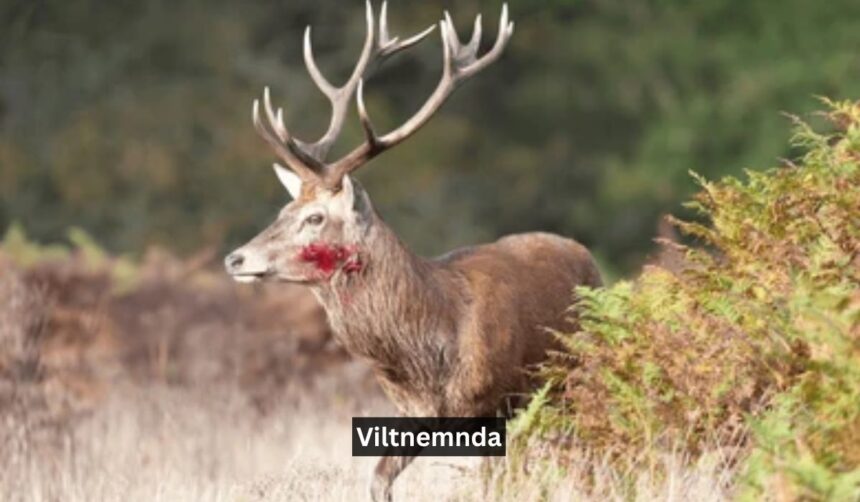Hitting a wild animal on the road can be a shocking and emotional experience, whether you’re driving through the forests of Norway or the backroads of the United States. In Norway, when such accidents occur, one specific authority takes charge—the Viltnemnda, the municipal wildlife committee responsible for handling injured or killed wild animals following traffic accidents. While this concept may be unfamiliar to many American readers, it offers a fascinating and well-organized model for wildlife management and road safety. Understanding how the Viltnemnda system works can shed light on best practices for wildlife protection, driver safety, and ethical reporting procedures after a collision involving an animal.
What Is the Viltnemnda?
The term Viltnemnda refers to the local wildlife committee established in Norwegian municipalities. This committee is made up of trained volunteers or appointed officials who manage wildlife-related issues such as collisions, population control, and humane responses to injured animals. The Viltnemnda operates under Norway’s Wildlife Act, which emphasizes respect for animals and sustainable wildlife management.
For a U.S. reader, the Viltnemnda can be compared to a combination of local animal control, state wildlife officers, and search-and-rescue services for animals. Their main duty is to respond quickly when an animal is hit by a vehicle, ensuring both human safety and the humane treatment of wildlife.
The Rising Concern of Wildlife Traffic Accidents

Across the world, wildlife traffic collisions are becoming more common as highways expand through natural habitats. In the United States alone, millions of animals—from deer and moose to bears and coyotes—are struck by vehicles each year. Similarly, Norway’s rugged terrain and forested roads experience thousands of such incidents annually.
The Viltnemnda system helps ensure these accidents are handled properly, reducing suffering for animals and minimizing further danger to motorists. In comparison, the U.S. still relies primarily on law enforcement, animal control, or game wardens to respond—often without a unified national system. Learning about how the Viltnemnda operates offers valuable insight for improving wildlife management strategies in other countries.
Immediate Actions After a Wildlife Collision
If you strike a wild animal, your first reaction may be panic or guilt, but the priority must always be safety. In Norway, drivers are legally obligated to report any collision with larger wild animals such as deer, moose, elk, reindeer, or bear. The same principle applies in the U.S., where many states require reporting accidents involving large wildlife.
Here’s what you should do:
-
Pull over safely and turn on your hazard lights.
-
Do not approach the animal. Injured wildlife can be dangerous.
-
Mark the collision site with a visible item, such as reflective tape or a piece of cloth, especially in Norway where this helps the Viltnemnda locate the animal.
-
Call authorities—in Norway, contact the police who will alert the Viltnemnda; in the U.S., contact local law enforcement or wildlife rescue.
-
Provide clear details such as your location, animal species, and direction of travel.
These steps not only protect you but also ensure that wildlife officers can respond quickly and humanely.
How the Viltnemnda Responds to Wildlife Accidents
When the Viltnemnda receives a report of a wildlife collision, they act immediately. Typically, a wildlife contact officer (ettersøksjeger) or trained tracker is dispatched to the scene. Equipped with GPS, reflective gear, and sometimes tracking dogs, they locate the injured or deceased animal and take appropriate action—either providing medical care, ending suffering humanely, or removing the carcass to prevent secondary accidents.
This swift and professional response system has earned the Viltnemnda recognition as one of the most efficient wildlife management structures in Europe. Their actions ensure that both the ecological balance and public safety are prioritized.
Legal Responsibilities and Ethical Duties
Under Norwegian law, it is a criminal offense not to report an accident involving large wildlife. The same ethical logic applies worldwide: if you hit an animal, reporting the incident is a moral and civic responsibility.
The Viltnemnda not only enforces this responsibility but also educates the public about coexistence with wildlife. Their efforts align with global movements promoting road ecology, driver awareness, and humane animal treatment. For American readers, the takeaway is clear—understanding local laws and supporting wildlife reporting initiatives can prevent suffering and strengthen conservation efforts.
Wildlife Management and Conservation Insights
Beyond handling accidents, the Viltnemnda plays a key role in wildlife population monitoring and habitat management. Data collected from accident reports helps identify hotspots where wildlife crossings or fences might be needed.
This integration of conservation data into infrastructure planning is something U.S. agencies are beginning to adopt, with projects like wildlife overpasses in Colorado and Montana. The Viltnemnda’s approach demonstrates how local communities can be directly involved in national environmental goals—bridging the gap between conservation and everyday citizens.
Technology and Innovation in Wildlife Safety
In recent years, Norway has invested in technology to reduce wildlife collisions, and the Viltnemnda has been central to implementing these innovations. Motion sensors, roadside reflectors, and GPS tracking of deer populations are all tools that improve response times and prevent accidents.
The United States could benefit from adopting similar strategies—particularly in high-collision zones like the Rocky Mountains or the Pacific Northwest. Combining technological solutions with trained local committees, as seen with the Viltnemnda, creates a more adaptive and data-driven wildlife safety system.
Comparing Norway’s Viltnemnda to U.S. Systems
While the Viltnemnda is unique to Norway, several U.S. programs share similar goals. State departments of transportation, game and fish commissions, and nonprofit wildlife rescue organizations all contribute to mitigating animal-vehicle collisions. However, coordination among these entities can be inconsistent.
Norway’s model is distinctive because it centralizes responsibility under local municipalities, ensuring faster response and accountability. Adapting a “Viltnemnda-style” framework in the U.S. could streamline wildlife response and make reporting more accessible to drivers.
Public Awareness and Community Involvement
The success of the Viltnemnda relies heavily on community cooperation. Drivers are encouraged to stay vigilant, report sightings of injured animals, and share information about high-risk areas. This sense of shared responsibility fosters trust between citizens and wildlife authorities.
For Americans, similar community-driven initiatives—such as citizen reporting apps, road signage, and public awareness campaigns—could play a significant role in reducing collisions and supporting local wildlife.
Preventing Wildlife Collisions: Practical Tips for Drivers
Whether you’re driving in Norway, Alaska, or rural Pennsylvania, the same precautions apply. Wildlife tends to be most active at dawn and dusk, especially during mating or migration seasons. Slow down in areas marked with animal crossing signs, use high beams responsibly, and remain alert for movement near the road’s edge.
Learning from the Viltnemnda’s proactive education campaigns, U.S. agencies can further emphasize driver safety through school programs, tourism guides, and media outreach—ensuring every driver knows what to do if they encounter wildlife on the road.
Final Thoughts
The Viltnemnda offers a powerful example of how communities can unite around safety, compassion, and environmental responsibility. Its structured approach to wildlife traffic accidents not only reduces animal suffering but also enhances road safety and ecological balance.
For readers in the United States, understanding the Viltnemnda model can inspire new ways to strengthen local wildlife response systems, improve data collection, and foster a deeper respect for the animals that share our landscapes. Every collision report, every safe driver, and every compassionate action contributes to a safer coexistence between humans and wildlife—something the Viltnemnda has championed with remarkable success.
Frequently Asked Questions (FAQs)
1. What exactly does the Viltnemnda do?
The Viltnemnda is a local wildlife committee in Norway responsible for managing and responding to wildlife-related incidents, especially traffic collisions. They track injured animals, ensure humane treatment, and coordinate with police to maintain public safety.
2. Is there something like the Viltnemnda in the United States?
Not exactly. In the U.S., wildlife collision responses are handled by a mix of law enforcement, state wildlife departments, and animal rescue organizations. However, the coordinated structure of the Viltnemnda could inspire similar local committees in American communities.
3. What should I do if I hit a wild animal on the road?
Stay calm, pull over safely, and avoid approaching the animal. Contact local authorities or animal control immediately. In Norway, the police notify the Viltnemnda; in the U.S., contact state or local wildlife officers.
4. Why is it important to report wildlife collisions?
Reporting ensures that injured animals receive proper care and prevents additional accidents. It also helps authorities gather data on wildlife movement, which supports better road planning and conservation strategies.
5. How does the Viltnemnda contribute to wildlife conservation?
The Viltnemnda collects valuable ecological data from accident sites, monitors animal populations, and works closely with environmental agencies. Their work informs infrastructure design and national conservation policies aimed at reducing animal mortality on roads.
FOR MORE : FLIPPAMAGAZINE












